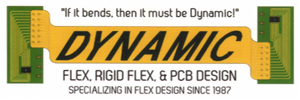Tips and Tools for PCB Designers Reduce Error Rates and Costs
They say that time flies when you’re having fun. Maybe that’s why we feel like time is running out when we build multi-card PCB devices. Even designing a single circuit board design can be a painful task, whether it’s trying to avoid EMI, grounding everything properly, mitigating static discharge, or optimizing the routing.
Creating a system of PCBs that fit together structurally and electrically can sometimes test the limits of boredom. Fortunately for us, some tools are just on the horizon that will make creating multiple card schematics more of a courtesy than a punishment. Three types of features help with overall PCB printed circuit board design but are particularly useful when it comes to multi-card PCBs a) card-to-card connectivity, b) MCAD integration, and c) modular organization.
Today, we share a few tips and tools for PCB designers to reduce error rates and costs for circuit board designs. For an error-free printed circuit board design, here are the best tools for designing multi-card PCB systems.
Integration with MCAD
Having a 3D modeling tool built into your program may not seem like a big deal, but it can make a big difference to your design process. Using MCAD to model your PCBs can prevent you from making costly mistakes, so you can also relax when you’re sending out a prototype or production card. When that same type of tool is at your fingertips, rather than those of a mechanical engineer elsewhere, it will revolutionize the way you design cards.
3D space verification
Have you ever designed a circuit board design and found out that the expensive prototype, or even a production series, didn’t fit inside the case? That can happen if you have added an electrolytic capacitor to a design before sending it in for prototyping—the result: uneven spacing. The stakes are high when it comes to space control, especially when dealing with multiple PCBs. Each of them has to fit, like a very expensive 3D puzzle.
Circuit board design software
Here we are talking about what a tremendous well-integrated MCAD tool will do. Tools are now available that can generate 3D models of individual components and create models of your PCB with everything on it. The best ones will also allow you to import a 3D model and perform space checks.
Verification of electrical rubrics between cards
There are a few programs that can test a complete system as a whole to make sure everything fits electrically and mechanically. This type of tool will help you keep all your ducks in a row during the design process, allowing you to do rule verification between multiple cards. It can also help you a lot during the redesign when a casing change or other external factor forces you to make significant alterations to the connection of your PCBs.
Error checking during development
There is nothing more tedious than tracing a network through your system, card by card, to make sure you are making all the right connections. A good multi-card PCB system design program will not only help you trace connections through your system, but will also automatically notify you when things are not quite right.
